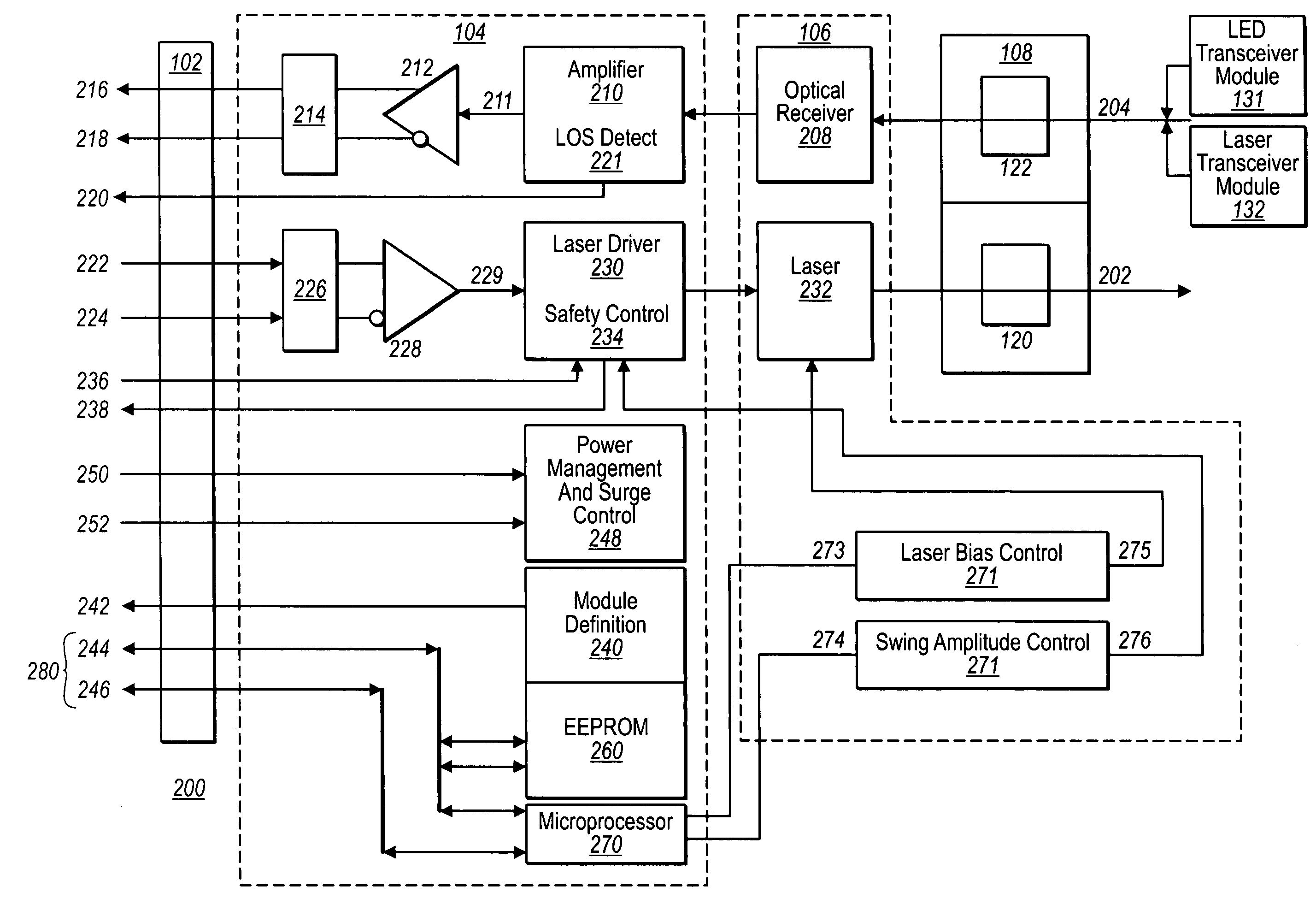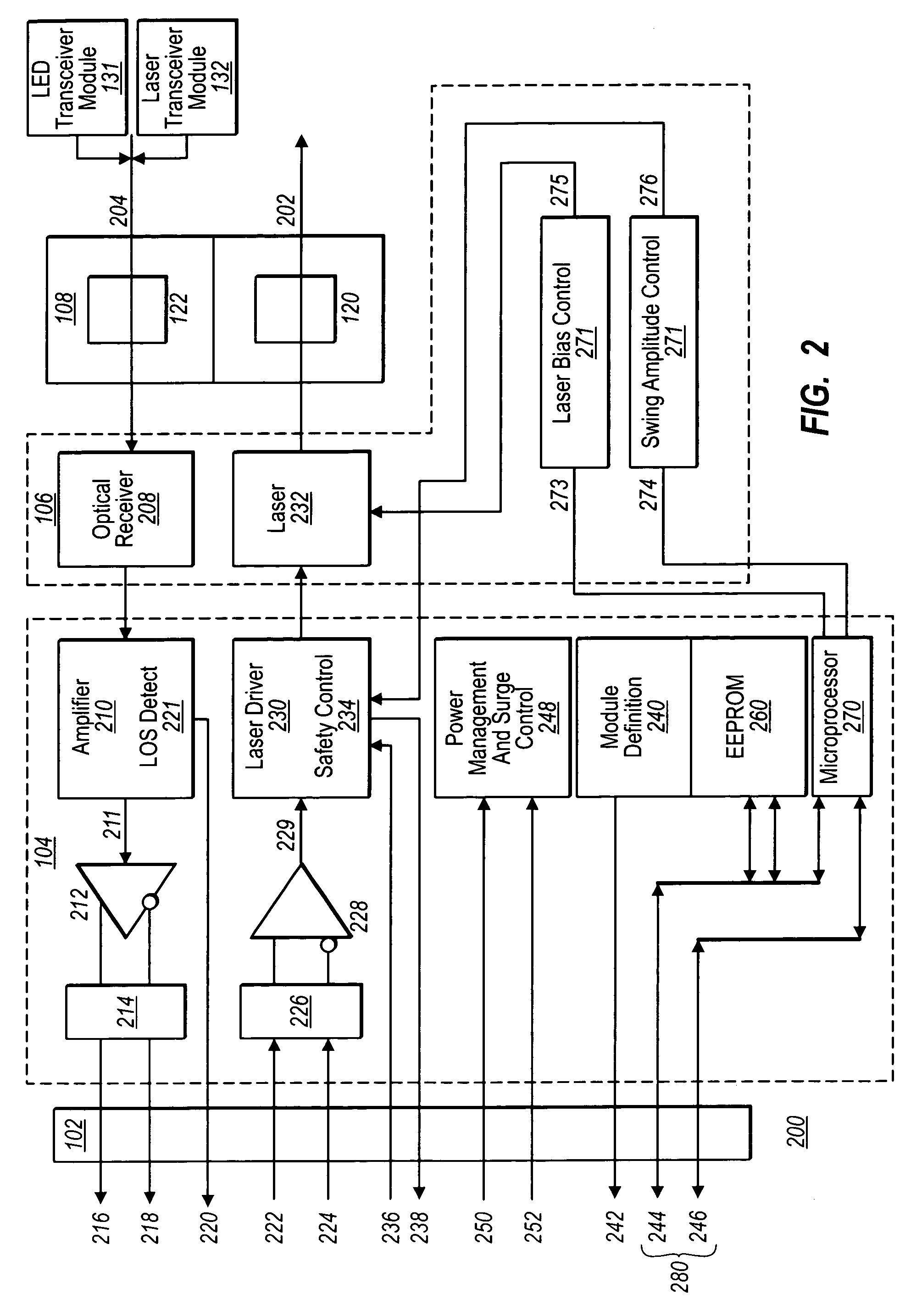Multi-rate and multi-level gigabit interface converter
a converter and multi-level technology, applied in electromagnetic transmission, electrical equipment, transmission, etc., can solve the problems of inability to interoperate with a low power transceiver, inability to interoperate with a high data rate and low data rate prior art transceiver modules, and inability to transmit and receive data within a limited range. , to achieve the effect of simplifying supply chain management and reducing the number of different modules
- Summary
- Abstract
- Description
- Claims
- Application Information
AI Technical Summary
Benefits of technology
Problems solved by technology
Method used
Image
Examples
Embodiment Construction
[0024]FIG. 2 is a block diagram of transceiver module 200 according to an embodiment of the invention. As shown in FIG. 2, duplex communication with another transceiver module or a GBIC is achieved through optical transmit signal 202 and optical receive signal 204. In receiving optical receive signal 204 from another transceiver module or GBIC, typically carried on fiber optic cable, the optical receive signal 204 is coupled to optical connector 108 which is in turn coupled to optical receiver 208. Optical receiver coupler 122 is typically an optical fiber connector. The optical signal is converted into a low level electrical signal 209 by optical receiver 208. For proper operation, however, the low level electrical signal is coupled to amplifier 210 to generate a high level electrical signal 211 which is coupled to PECL driver 212 and termination 214 to generate differential PECL signals +RX_DAT 216 and −RX_DAT 218. PECL signals +RX_DAT 216 and −RX_DAT 218 are then coupled to elect...
PUM
 Login to View More
Login to View More Abstract
Description
Claims
Application Information
 Login to View More
Login to View More - R&D
- Intellectual Property
- Life Sciences
- Materials
- Tech Scout
- Unparalleled Data Quality
- Higher Quality Content
- 60% Fewer Hallucinations
Browse by: Latest US Patents, China's latest patents, Technical Efficacy Thesaurus, Application Domain, Technology Topic, Popular Technical Reports.
© 2025 PatSnap. All rights reserved.Legal|Privacy policy|Modern Slavery Act Transparency Statement|Sitemap|About US| Contact US: help@patsnap.com



